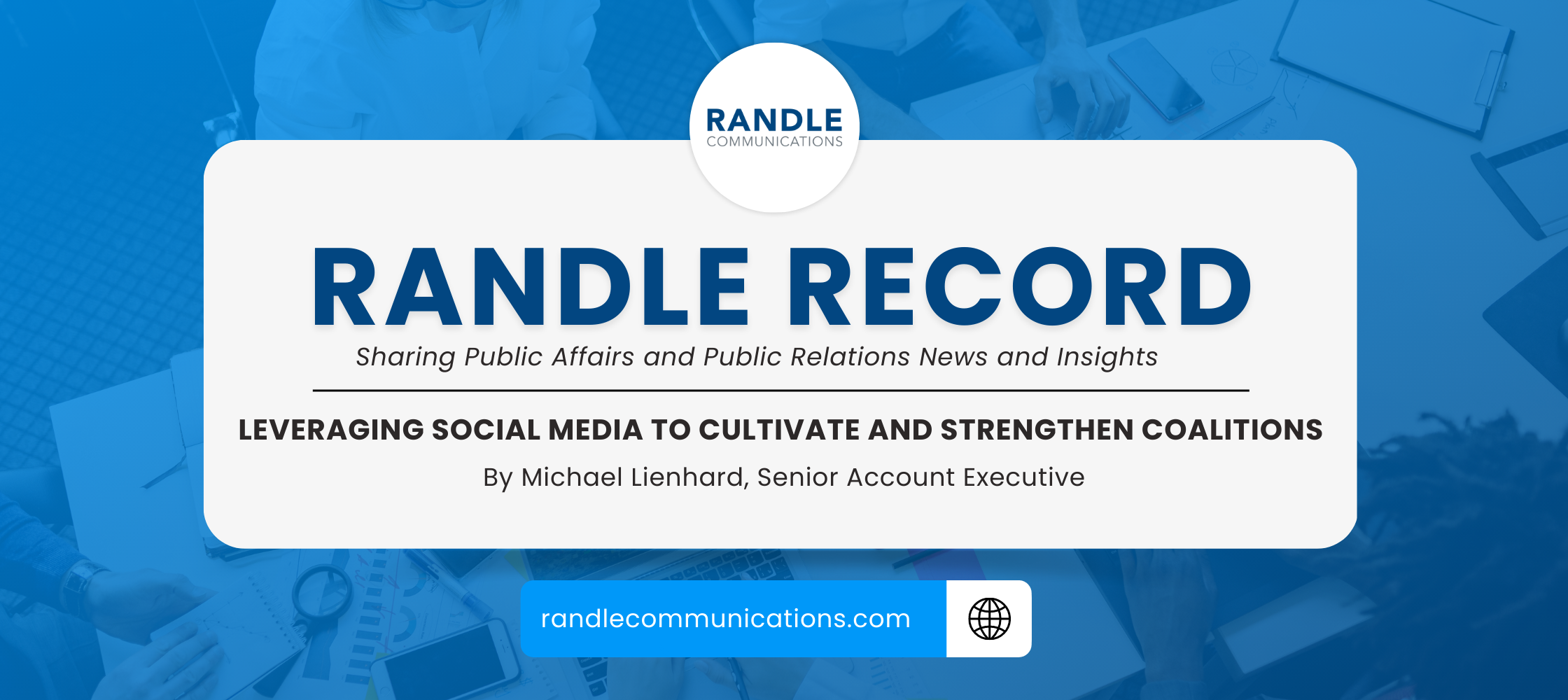 By: Michael Lienhard, Senior Account Executive, Randle Communications
By: Michael Lienhard, Senior Account Executive, Randle Communications
A critical public affairs strategy for success is building an authentic coalition of partners who champion your cause. Coalition building includes cultivating a group of stakeholders, often from diverse backgrounds, that have unique viewpoints but a shared stake in the outcome of policy decisions. While digital platforms and social media are ubiquitous in 2023, online platforms are often overlooked as a tool for creating and growing coalitions.
From recruiting potential partners to engaging with existing allies, social media can expand reach, mobilize supporters and amplify messages. Below, we examine the role of social media in coalition building and provide three best practices to leverage social media to build successful coalitions and win for our clients.
- Identify Prospective Coalition Members
Who are existing allies and how can we identify new partners? Consider the individuals, organizations and other influencers who share goals or have a stake in the issue at hand, even tangentially. Use social media listening tools, to analyze online conversations, to identify organizations, individuals and groups with shared views.
When examining potential partners consider individuals and organizations with large social media followings or other forms of influence, such as high engagement rates or loyal followers.
2. Leverage Social Media for Partner Engagement
Once potential partners have been identified, the next step is to engage by commenting on posts, sharing content, tagging individuals and organizations in posts or articles of common interest, and reaching out directly to share your goals and propose ways of collaboration. It’s important to be sincere with all interactions and to avoid simply asking for their support. Instead, focus on building genuine relationships and finding ways to collaborate on shared goals.
In addition to reaching out to potential partners, social media is a must when engaging with existing coalition members. This could include sharing updates on the campaign, highlighting the work of coalition members and providing engaging content and opportunities for members to share their own stories and experiences related to the issue. Keeping coalition members engaged and informed can help build a sense of community and momentum around the campaign.
3. Measure Success and Partnership Engagement
If you can’t measure impact it is difficult to determine effectiveness, so it’s important to track and analyze social media efforts and make refinements as necessary. Establishing goals at the onset and monitoring engagement metrics such as likes, comments and shares, is key to gauge the impact of efforts to grow the coalition over time. By analyzing this data, you can identify what’s working and what’s not, and adjust the social media strategy accordingly.
Social media is a powerful tool for building coalitions in strategic public affairs campaigns. By identifying potential partners, engaging with existing coalition members and leveraging influencers, campaigns can use social media to expand their reach, mobilize supporters, amplify resonance and ultimately deliver winning results. Randle Communications follows these best practices to help clients achieve their goals.

